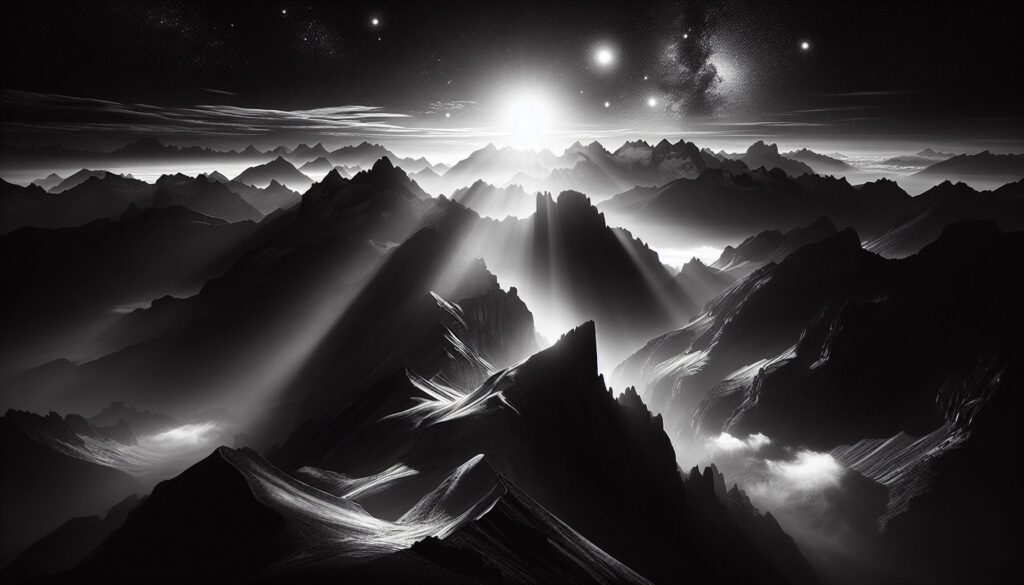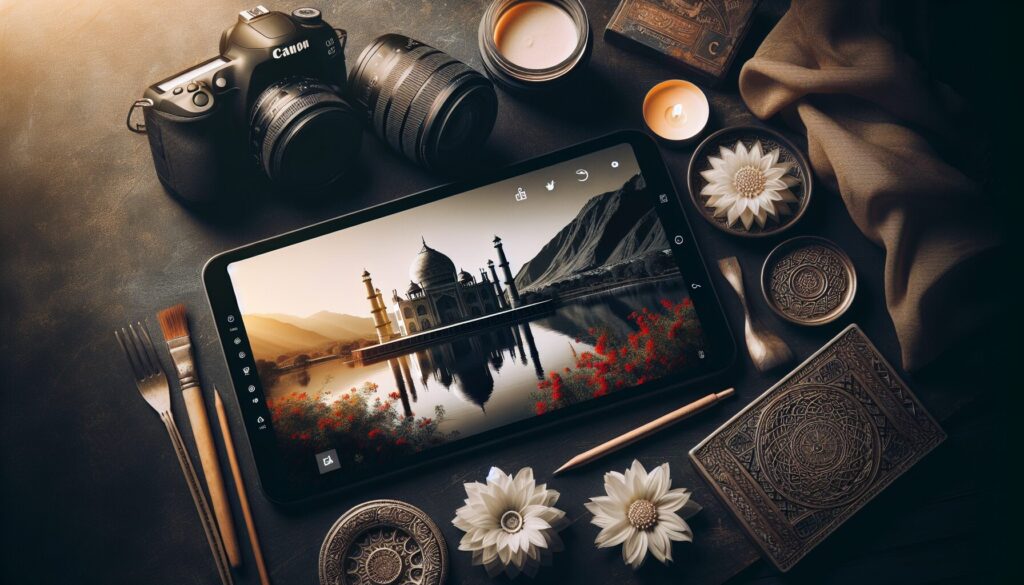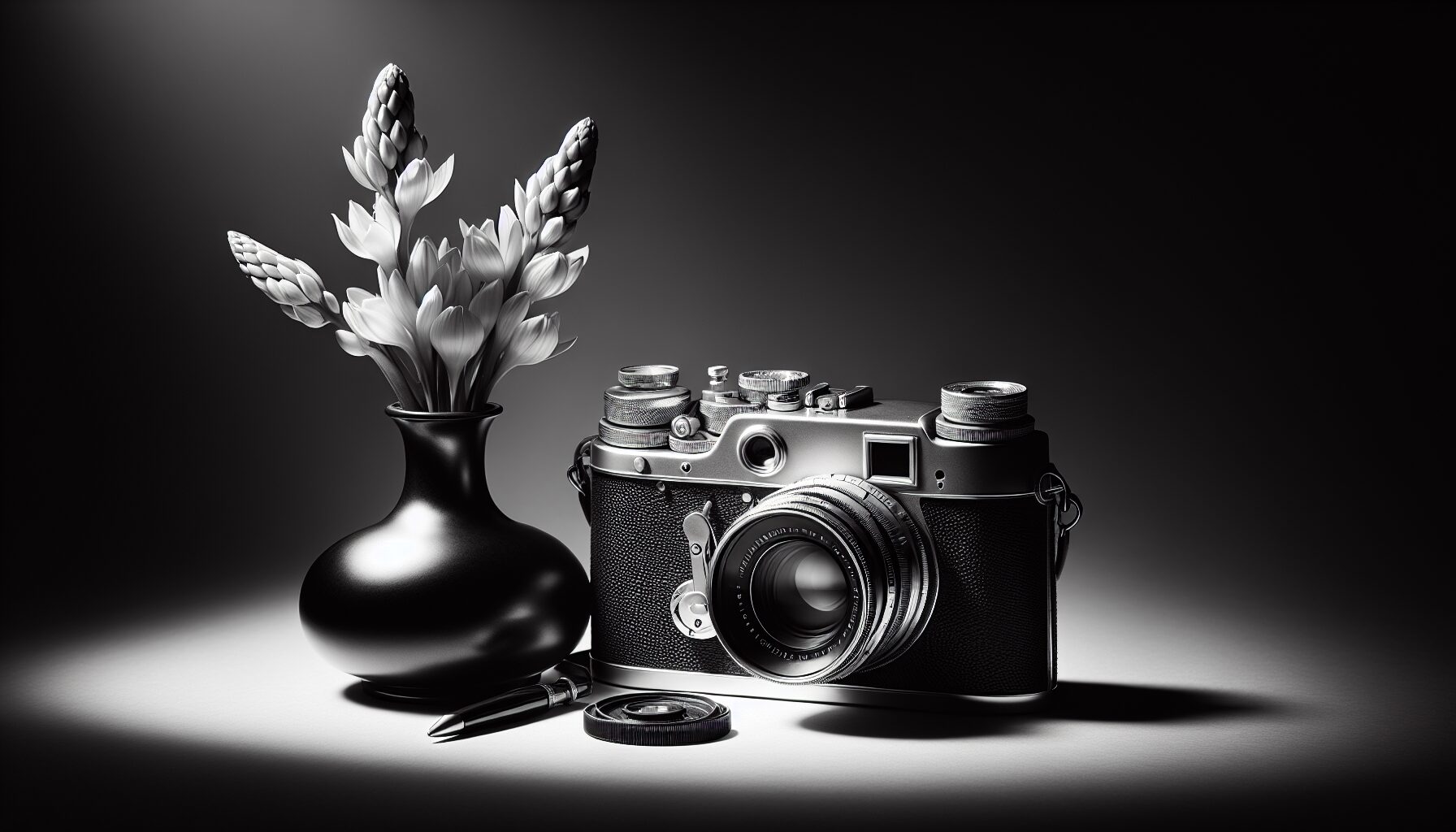Oh, the magic of black and white photography, right? It’s like stepping into a timeless world where emotions and stories come alive through shades of gray. I remember the first time I tried my hand at this art with my trusty Canon EOS R5. I was wandering through the vibrant streets of Lahore, capturing the hustle and bustle. Using a 50mm f/1.8 lens, I set my camera to ISO 100, f/16, and 1/30s. The results? Absolutely stunning! The key lies in understanding contrast and lighting. You want to emphasize textures and shapes, which can be done by shooting during the golden hour when shadows are long and dramatic. Additionally, using a polarizing filter can cut down reflections and enhance those deep blacks. Learning this art is like embarking on a beautiful journey. You’ll discover Pakistan’s landscapes and architecture in a whole new way. Canon EOS R5 Lahore
Related: The Ultimate Guide to Cityscape Photography in Pakistan
Choosing the Right Equipment and Settings
Oh, the magic of stunning black and white photography! If you’re in Pakistan and looking to capture those breathtaking monochrome shots, choosing the right equipment and settings is key. Trust me, it’s not just about the lack of color; it’s about the depth, emotion, and texture that b&w can offer. Let’s dive in with some expert tips and a sprinkle of personal experience!
When I first started exploring black and white photography, I was using a Canon EOS R5. This camera is fantastic because of its high dynamic range, which helps capture those subtle shades of grey. It’s like painting with light! A 50mm f/1.8 lens is often my go-to for its sharpness and ability to isolate subjects with beautiful bokeh. If you’re using something like a Nikon Z6, you’ll find similar success. The key is to have a camera and lens combo that works well in various lighting conditions, especially since Pakistan’s natural light can change dramatically throughout the day.
Camera Settings to Elevate Your Shots
Now, about those settings. Always shoot in RAW. This gives you maximum flexibility during post-processing. I usually set my ISO to around 100 or 200 to keep noise levels down, especially when shooting outdoors. Aperture settings depend on what you’re aiming for; an f/16 might be perfect for landscapes, ensuring everything is in focus. However, for portraits, try an f/2.8 to create a dreamy, blurred background.
Don’t forget about shutter speed! A speed of 1/30s can capture the motion of bustling streets in Karachi, while faster speeds can freeze action when needed. Additionally, using a polarizing filter can reduce reflections and enhance contrast, crucial for that punchy black and white look. I once captured a stunning image of the Lahore Fort, and the polarizer made the clouds pop against the ancient bricks.
Exploring different gear and settings is like embarking on a creative adventure. So grab your camera and start experimenting! You might just capture something extraordinary that makes you fall in love with black and white all over again. Remember, even the simplest scene can become a masterpiece with the right equipment and a little imagination.
Mastering Lighting for Monochrome Images

Lighting is the soul of black and white photography. I remember a trip to Lahore with my trusty Canon EOS R5. The early morning light cast long shadows that made the Badshahi Mosque look even more majestic. I used a 50mm f/1.8 lens, keeping my ISO at 100 and adjusting my aperture to f/16 to capture the intricate details. The key was to use the soft, directional light to highlight textures and contrasts. This technique brings out the depth and drama in monochrome images.
Understanding the quality of light is crucial. Harsh midday sun can be challenging, but it’s also an opportunity. When I shot the bustling streets of Karachi, I waited for moments when the sun created sharp contrasts. This helped emphasize shapes and patterns, creating striking black and white compositions. Try setting your camera to a higher shutter speed, like 1/1000s, to freeze movement and capture crisp shadows.
Exploring Light and Shadow
Using natural light effectively is essential. However, don’t shy away from artificial light sources. Lamps and streetlights can add character to your photos. During a night walk in Islamabad, I used a simple handheld LED to illuminate my subject, creating a moody atmosphere. This technique works wonders when you want to control the light source and direction.
Another tip: Experiment with backlighting. It can create a halo effect, adding an ethereal quality to portraits. I often shoot against a setting sun, positioning my subject between the camera and the light source. This technique, combined with a wide aperture like f/2.8, produces beautifully soft backgrounds.
Did you know that according to National Geographic, the best times for photography are during the golden hours, shortly after sunrise or before sunset? These times offer soft, diffused light that enhances the tonal range of monochrome images. So next time you’re out with your camera, pay close attention to how light interacts with your subject. It could make all the difference.
Composition Techniques for Striking Black & White Photos
Capturing stunning black and white photos is an art that relies heavily on composition. I remember a trip to the bustling streets of Lahore, armed with my trusty Canon EOS R5 and a 50mm f/1.8 lens. The magic really happens when you start to see the world in terms of shapes, lines, and contrasts. One of my favorite techniques is using leading lines to draw the viewer’s eye to a focal point. For instance, the intricate patterns on a Mughal-era building can guide the eye beautifully when captured at an angle.
Another trick I love is framing. Imagine using the archways of Badshahi Mosque to naturally frame a subject. This method brings depth and focus to your photos. When shooting, I often set my camera to ISO 100, f/16, and 1/30s to capture sharp details while maintaining a balanced exposure.
Play with Light and Shadow
In black and white photography, light and shadow become your best friends. During my evening walks in Karachi, the street lamps cast dramatic shadows that add mystery to everyday scenes. Always look for contrasting light and shadow to give your photos a moody feel. Adjusting the exposure compensation on your camera can help enhance these effects.
Texture also plays a significant role. The rugged texture of an old wooden door or the smooth surface of a marble floor can add interest and depth. When editing, I use a polarizing filter to reduce glare and enhance these textures. For more inspiration, check out night sky photography tips in Pakistan. It’ll give you ideas on capturing stunning scenes under unique lighting conditions.
Experimenting with different perspectives can also lead to striking results. Crouch low or shoot from a higher vantage point. This change in perspective can highlight patterns and contrasts you might otherwise miss. By practicing these techniques, you’ll soon master the art of creating compelling black and white images that highlight the rich culture and landscapes of Pakistan.
Post-Processing Tips for Enhancing Your Photos
Let’s dive into some post-processing magic that can really elevate your black and white photos! I remember the first time I edited a photo taken with my trusty Canon EOS R5, using a 50mm f/1.8 lens. I was in the bustling streets of Lahore, capturing the vibrant chaos around me. But when I converted one of those shots to black and white, it was like uncovering a hidden story! The key to enhancing such images lies in mastering a few essential techniques.
First off, pay close attention to the contrast. Increasing contrast can make your black and white photos pop by highlighting the difference between light and dark areas. You can use tools like Adobe Lightroom or Capture One to adjust these settings effortlessly. However, avoid overdoing it, as too much contrast can lose details in the shadows and highlights.
Next up, let’s talk about dodging and burning. This technique allows you to selectively lighten or darken areas of your photo. For instance, when editing a portrait, you might want to brighten the subject’s face while darkening the background. This draws the viewer’s eye to the main subject. In Photoshop, use the dodge and burn tools to achieve this effect, but do it gently to maintain the natural feel.
Fine-Tuning with Filters
Filters can also add a wow factor to your black and white images. Using color filters during post-processing can emphasize certain elements. For example, a red filter can make skies dramatically dark, enhancing cloud details. In Lightroom, you can simulate this effect by adjusting the color channels in the B&W mix panel.
Let’s not forget the importance of sharpening. A well-sharpened image highlights details and textures, adding depth to your photo. Use the unsharp mask tool in Photoshop to achieve this, but be cautious not to over-sharpen, as it can introduce noise. Speaking of noise, sometimes adding a bit of grain can give your photos a classic, film-like feel. Experiment with the grain tool in Lightroom to find what suits your style.
Finally, remember that every image is unique. Experiment with these techniques to find the perfect balance for each photo. Embrace the process, and soon you’ll be creating breathtaking black and white images that capture the essence of your subjects.
Inspiration from Pakistani Black & White Photographers

Let’s dive into the mesmerizing world of Pakistani black and white photography! One of my fondest memories involves capturing the breathtaking landscapes of Hunza with my trusty Canon EOS R5. I paired it with a 50mm f/1.8 lens. This combo is fantastic for capturing those crisp details and dreamy contrasts in monochrome. I set the ISO to 100 for minimal grain, used f/16 for sharpness across the frame, and a shutter speed of 1/30s to balance exposure just right. It felt like painting with light!
Now, if you’re looking for inspiration, you’ll want to check out the works of Tapu Javeri. Known for his striking portraits, Tapu beautifully captures the essence of Pakistani culture. His use of lighting and shadows is a masterclass in creating mood and depth. Then there’s Mobeen Ansari, who has an incredible knack for storytelling through his lens. His black and white images often convey powerful emotions, making you stop and think.
Exploring Techniques and Styles
Experimenting with different techniques can be incredibly rewarding. For instance, try using a polarizing filter to enhance contrasts when shooting outdoors. This can dramatically increase the depth and drama in your images. Additionally, play around with long exposure settings to capture movement. It adds a dynamic edge to static scenes, making them come alive.
Furthermore, don’t shy away from post-processing. Tools like Adobe Lightroom can enhance your photos. Adjusting the contrast, highlights, and shadows can transform a good photo into something truly stunning. Just remember, the goal is to bring out the story within your frame. Exploring the works of these talented photographers and trying out various techniques can truly elevate your black and white photography game!
Conclusion
In essence, mastering black and white photography is a journey that intertwines technical skill and creative vision. The article highlights the importance of choosing the right equipment, such as the Canon EOS R5 and a 50mm f/1.8 lens, to capture the depth, emotion, and texture inherent in monochrome images. Key techniques like understanding lighting, employing effective composition, and skillful post-processing are essential for creating striking photographs. By exploring different settings and experimenting with light and shadow, photographers can capture the rich culture and landscapes of Pakistan in a timeless manner. Additionally, seeking inspiration from renowned photographers and refining your style through practice can profoundly enhance your craft. Ultimately, the blend of technical expertise and artistic perspective can transform simple scenes into captivating black and white masterpieces.
Continue Exploring
Unleash the photographer in you with just your smartphone! Dive into the world of smartphone photography and unlock tips and tricks to capture stunning photos effortlessly.
Frequently Asked Questions
What are the best camera settings for stunning black and white photography?
To achieve stunning black and white photos, consider shooting in RAW format to preserve detail and maximize editing flexibility. Use a low ISO setting to minimize noise, which is more noticeable in black and white images. Experiment with aperture settings to control depth of field and shutter speed to capture motion. Additionally, consider using a monochrome picture style in your camera to visualize the outcome, even though you should still shoot in RAW for the best results.
How can I use lighting to enhance black and white photography?
Lighting plays a crucial role in black and white photography. To enhance your images, utilize dramatic lighting with high contrast to emphasize textures and shapes. Side lighting can create depth and highlight details, while backlighting can produce striking silhouettes. Experiment with natural light during different times of the day and consider using reflectors or diffusers to control shadows and highlights for more balanced compositions.
Which post-processing techniques can make black and white photos more impactful?
In post-processing, you can enhance black and white photos by adjusting contrast to add depth and drama. Use dodging and burning techniques to selectively lighten or darken areas, drawing attention to key elements. Adjust clarity and sharpness to enhance textures and details. Consider applying a subtle tint or filter to add a unique tone to your image, and always fine-tune the balance of highlights and shadows to achieve the desired mood and impact.


Leave a Reply